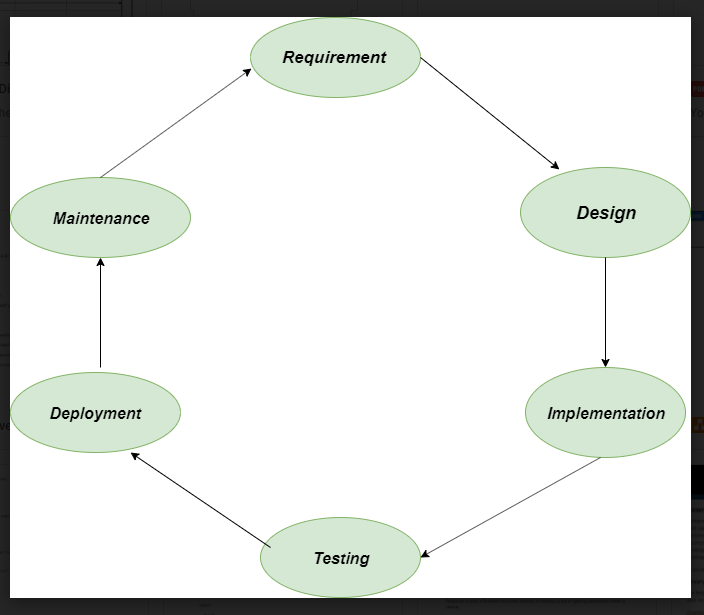What is SDLC(Software Development Life Cycle) and its phases
Last Updated :
05 Dec, 2023
The Software Development Life Cycle (SDLC) is a process used by software development organizations to plan, design, develop, test, deploy, and maintain software applications.

SDLC(Software Development Life Cycle)
SDLC (Software Development Life Cycle) is used in Every Software Development Company because it is the root of the Development Cycle, if that model would not exist in the world, firstly no software can build secondly if any how it would be made, it’s not going to succeed it has no use, because of no maintenance, but Luckily SDLC model exist in Tech world But why we need it Actually!
There are several reasons why organizations use the Software Development Life Cycle (SDLC) when developing software applications:
To provide a structured and organized approach to software development: The SDLC provides a framework for managing the software development process, which helps to ensure that all necessary steps are taken and that the final product meets the requirements.
1.To ensure that the software is of high quality: The SDLC includes testing and quality assurance phases, which help to ensure that the software is free of bugs and that it meets the requirements.
2.To manage risks and costs: The SDLC helps organizations to identify and manage risks early in the development process, which can help to reduce costs and minimize the impact of any issues that do arise.
3.To improve communication and collaboration: The SDLC helps to ensure that all stakeholders, including customers, end-users, and developers, are involved in the development process and that their needs are taken into account.
4.To improve efficiency and productivity: The SDLC helps organizations to optimize the use of resources and to streamline the development process, which can improve efficiency and productivity.
5.To increase the likelihood of a successful project outcome: Following a well-defined SDLC process can greatly increase the chances of success of the project, as the process guides the team towards the goal in a systematic and efficient way.
Overall, the SDLC is a valuable tool for organizations to use when developing software applications, as it helps to ensure that the final product is of high quality, meets the requirements, and is delivered on time and within budget.
The SDLC typically includes the following phases:

1. Requirements gathering and analysis: This phase involves gathering information about the software requirements from stakeholders, such as customers, end-users, and business analysts.
2. Design: In this phase, the software design is created, which includes the overall architecture of the software, data structures, and interfaces. It has two steps:
- High-level design (HLD): It gives the architecture of software products.
- Low-level design (LLD): It describes how each and every feature in the product should work and every component.
3. Implementation or coding: The design is then implemented in code, usually in several iterations, and this phase is also called as Development.
things you need to know about this phase:
- This is the longest phase in SDLC model.
- This phase consists of Front end + Middleware + Back-end.
- In front-end: Development of coding is done even SEO settings are done.
- In Middleware: They connect both the front end and back end.
- In the back-end: A database is created.
4. Testing: The software is thoroughly tested to ensure that it meets the requirements and works correctly.
5. Deployment: After successful testing, The software is deployed to a production environment and made available to end-users.
6. Maintenance: This phase includes ongoing support, bug fixes, and updates to the software.
There are different methodologies that organizations can use to implement the SDLC, such as Waterfall, Agile, Scrum, V-Model and DevOps.
Like Article
Suggest improvement
Share your thoughts in the comments
Please Login to comment...